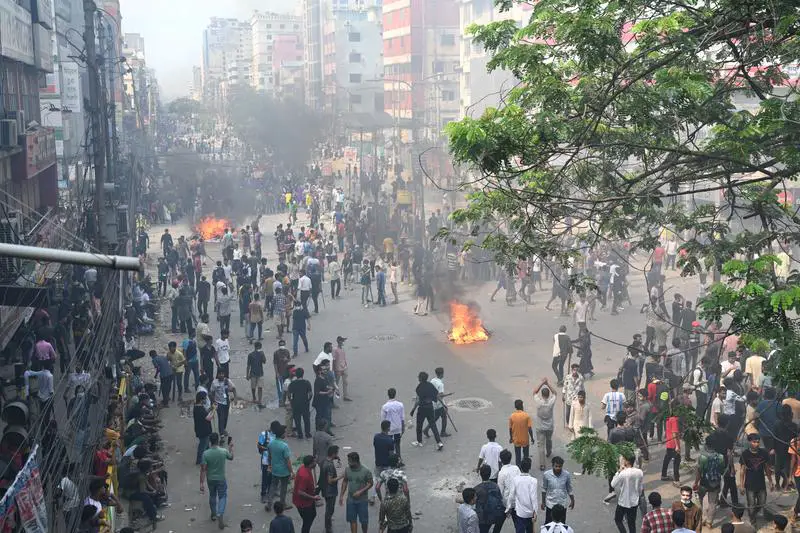On August 5, 2024, Bangladesh was plunged into turmoil as demonstrations calling for the resignation of Prime Minister Sheikh Hasina escalated. The rising tension eventually resulted in Hasina stepping down and leaving the country.
Initially incited by opposition to a government job quota system, the civil unrest has resulted in a reported 300 fatalities, including 14 law enforcement officers, as well as countless injuries countrywide. Violence has erupted in various regions, including Dhaka, Bogura, Pabna, Rangpur, Magura, Cumilla, Barisal, and Feni.
Protests began with students demanding an end to a quota system that allocated 30 percent of government jobs to families of war veterans. The movement quickly expanded into a larger anti-government protest, attracting a wide range of people dissatisfied with high unemployment levels and economic inequality. About 18 million young Bangladeshi citizens are currently jobless, fueling public discontent.
The government responded by imposing a shoot-on-sight curfew and a nationwide internet blackout, in an attempt to inhibit the spread of information and deter further mobilization. However, protests continued, with participants demanding justice and transparency. Amnesty International documented cases of extreme force, such as the use of lethal firearms against unarmed protesters.
In Dhaka, police utilized tear gas and rubber bullets to disperse crowds, leading to violent confrontations. A student activist who witnessed the violence told Al Jazeera, “I am on the street right now, and I can see so many people here. This is not just a student protest or a ‘quota protest’”
The disturbances have attracted global attention. Amnesty International and the United Nations appealed to the Bangladeshi government to safeguard peaceful protesters and hold those accountable for the violence. Calls for peaceful resolution were also echoed by the United States and other countries.
The government under Prime Minister Hasina accused opposition parties, particularly the Bangladesh Nationalist Party (BNP), of provoking violence. In reaction, the government detained thousands of individuals, including several protest leaders. “The government is continuing to show complete and utter insensitivity to our movement,” said Abdul Kader, a coordinator of Students Against Discrimination.
The Bangladesh Supreme Court attempted to address the protesters’ demands by reducing the job quota system to five percent, with most posts now being allocated based on merit. However, this action did not satisfy the demonstrators, who insisted on a complete abolition of the quotas and a public apology from Prime Minister Hasina for the violence.
With mounting pressure and escalating violence, Prime Minister Hasina resigned and left the country on August 5, 2024. She traveled to India and is seeking asylum in the UK. Hasina is currently in India, planning her next move. She faces uncertainty as the British government has suggested she may not get the anticipated legal protection she seeks in the UK.
Subsequently, the army chief, General Waker-Uz-Zaman, announced the formation of an interim government and appealed for calm, vowing to restore order and bring justice to those affected by the violent crackdown.
Currently, the situation remains unstable with new protests planned and a curfew in place. As the government grapples to regain control, the future of Bangladesh’s political scenario is uncertain. The international community continues to monitor the developments closely, urging restraint and dialogue to prevent further loss of life.











